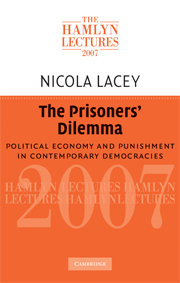The Hamlyn Trust
Published online by Cambridge University Press: 31 January 2011
Summary
The Hamlyn Trust owes its existence today to the will of the late Miss Emma Warburton Hamlyn of Torquay, who died in 1941 at the age of eighty. She came of an old and well-known Devon family. Her father, William Bussell Hamlyn, practised in Torquay as a solicitor and JP for many years, and it seems likely that Miss Hamlyn founded the trust in his memory. Emma Hamlyn was a woman of strong character, intelligent and cultured, well versed in literature, music and art, and a lover of her country. She travelled extensively in Europe and Egypt, and apparently took considerable interest in the law and ethnology of the countries and cultures that she visited. An account of Miss Hamlyn by Professor Chantal Stebbings of the University of Exeter may be found, under the title ‘The Hamlyn Legacy’, in volume 42 of the published lectures.
Miss Hamlyn bequeathed the residue of her estate on trust in terms which it seems were her own. The wording was thought to be vague, and the will was taken to the Chancery Division of the High Court, which in November 1948 approved a Scheme for the administration of the trust. Paragraph 3 of the Scheme, which follows Miss Hamlyn's own wording, is as follows:
The object of the charity is the furtherance by lectures or otherwise among the Common People of the United Kingdom of Great Britain and Northern Ireland of the knowledge of the Comparative Jurisprudence and Ethnology of the Chief European countries including the United Kingdom, and the circumstances of the growth of such jurisprudence to the Intent that the Common People of the United Kingdom may realise the privileges which in law and custom they enjoy in comparison with other European Peoples and realising and appreciating such privileges may recognise the responsibilities and obligations attaching to them.
- Type
- Chapter
- Information
- The Prisoners' DilemmaPolitical Economy and Punishment in Contemporary Democracies, pp. vi - viiiPublisher: Cambridge University PressPrint publication year: 2008

